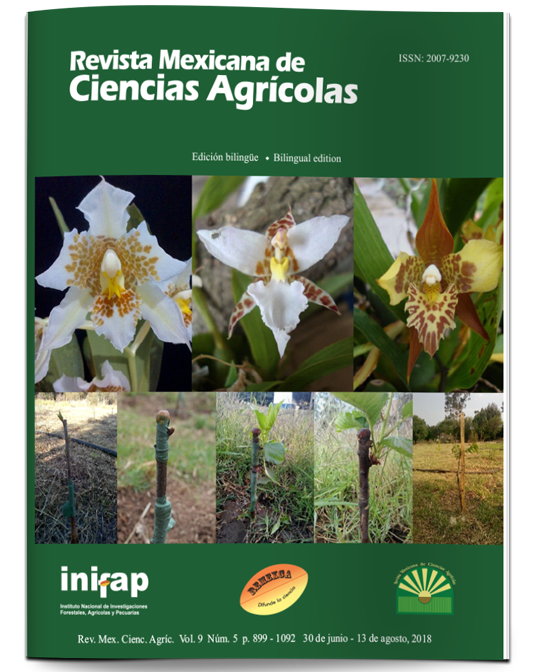Drying kinetics of Moringa oleifera
DOI:
https://doi.org/10.29312/remexca.v9i5.1503Keywords:
drying kinetics, hybrid solar dryer, moringaAbstract
Currently in several points of Mexico, as in the municipalities of Tuzantla, Mugica, Uruapan, Michoacan; Monterrey, Nuevo Leon, Torreon, Coahuila, Tuxtla Gutiérrez and Chiapa of Corzo, these last two in the state of Chiapas, there are plantations of Moringa oleifera trees for commercial purposes; however, producers have not found an adequate procedure that contributes to improving the final quality of said plant. The objective was to find a suitable drying process for this product, for which its kinetics of drying will be studied. The moringa was dried in a hybrid solar dryer at different temperatures (40 °C, 50 °C and 60 °C) during the month of May, recording the loss of mass and determining the free humidity for each temperature, through the balance Velab VE-24 analytical and Velab VE-50-5 thermo-balance. The curves were obtained from the analysis and processing of the experimental data through a program elaborated in Matlab and it was determined which of the selected mathematical models (Newton, Page, Henderson and Verma) was better adjusted to them. Determining that the Page model is the one that best describes the moringa's kinetics of drying. The diffusion coefficient and the activation energy were calculated for this case. Finally, the organoleptic quality of the product was evaluated by comparing it with other commercial samples of moringa, through the application of surveys. The drying curves show a decrease in the drying time when the temperature increases, resulting in a better quality of the dried product. Samples that were dried at 60 °C showed better characteristics of color, taste, smell and texture according to the organoleptic evaluation.
Downloads
Downloads
Published
How to Cite
Issue
Section
License
The authors who publish in Revista Mexicana de Ciencias Agrícolas accept the following conditions:
In accordance with copyright laws, Revista Mexicana de Ciencias Agrícolas recognizes and respects the authors’ moral right and ownership of property rights which will be transferred to the journal for dissemination in open access. Invariably, all the authors have to sign a letter of transfer of property rights and of originality of the article to Instituto Nacional de Investigaciones Forestales, Agrícolas y Pecuarias (INIFAP) [National Institute of Forestry, Agricultural and Livestock Research]. The author(s) must pay a fee for the reception of articles before proceeding to editorial review.
All the texts published by Revista Mexicana de Ciencias Agrícolas —with no exception— are distributed under a Creative Commons License Attribution-NonCommercial 4.0 International (CC BY-NC 4.0), which allows third parties to use the publication as long as the work’s authorship and its first publication in this journal are mentioned.
The author(s) can enter into independent and additional contractual agreements for the nonexclusive distribution of the version of the article published in Revista Mexicana de Ciencias Agrícolas (for example include it into an institutional repository or publish it in a book) as long as it is clearly and explicitly indicated that the work was published for the first time in Revista Mexicana de Ciencias Agrícolas.
For all the above, the authors shall send the Letter-transfer of Property Rights for the first publication duly filled in and signed by the author(s). This form must be sent as a PDF file to: revista_atm@yahoo.com.mx; cienciasagricola@inifap.gob.mx; remexca2017@gmail.
This work is licensed under a Creative Commons Attribution-Noncommercial 4.0 International license.



